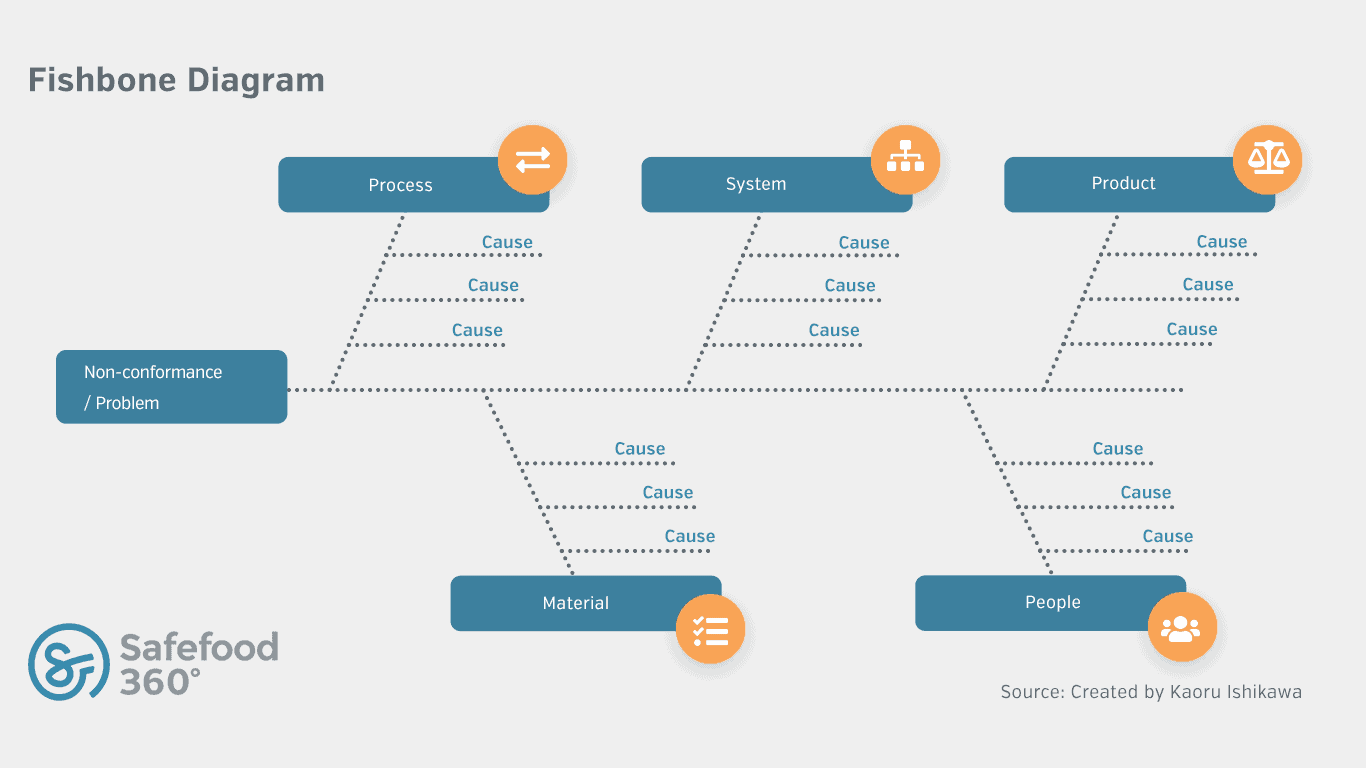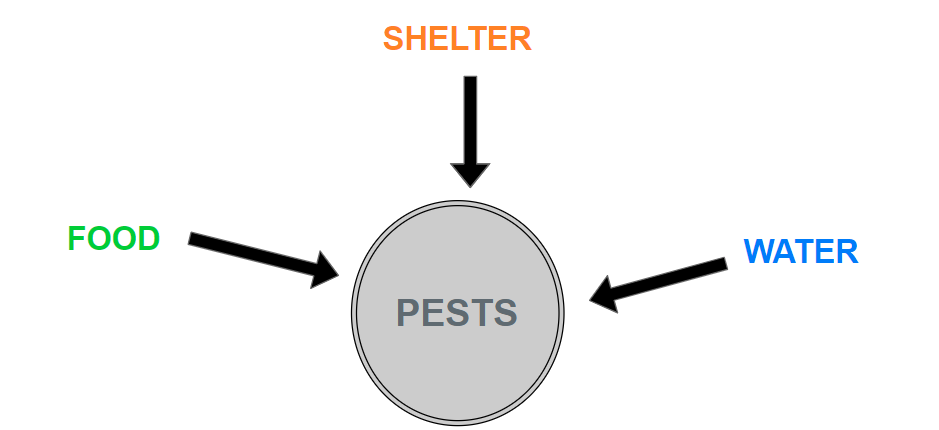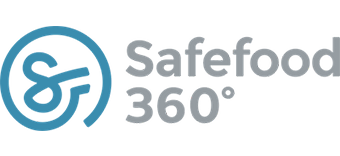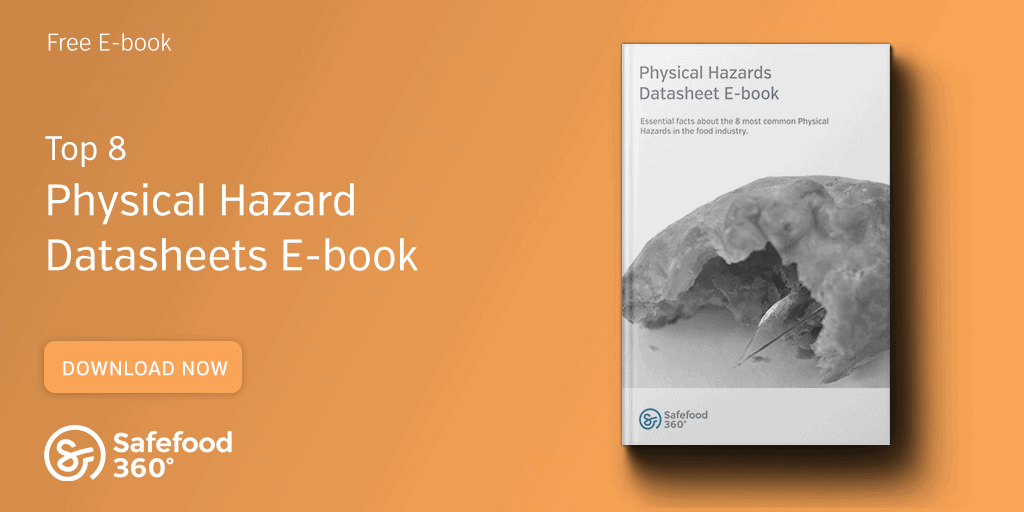Considerations for Effective Pest Control Management
It’s not uncommon to hear horror stories about pests in food, whether it’s dangerous spiders in bananas or rodents in finished products from chocolate bars to bread.
Sadly, when such incidents happen, and things have gone so wrong, it’s not unusual for these individual cases to make headlines and quickly affect so much good work and tarnish reputations that might have been meticulously built over years if not decades or centuries.
Analysis of SQF non-conformances from unannounced audits in 2019 by the Safe Food Alliance found that clause 11.2.12.2, pest prevention (identified as pest activity), was in the top 10.
In other years clause 11.2.7.1, Dust, Insect & Pest Proofing, has also been in the top 10 minor non-conformances, typically due to exterior doors/openings not being effectively sealed to protect against pests.
Too regularly, lack of effective pest control is also often one of the most frequently cited violations by the FDA, which it could be argued reflect a trend that industry is grappling with sustainable and effective measures to protect against the contamination of food products by pests.
Sanitation conditions often rank not too far behind potentially indicating that they are not being monitored closely enough to ensure conformance with Current Good Manufacturing Practices to prevent unsanitary conditions.
This can be compounded when facilities are also found to have inadequate protection from pests when walls and ceilings are not constructed to allow for adequate cleaning/repairs resulting in unsanitary conditions.
This blog considers why the above can occur and proposes some initial considerations that might be applied for creating a more effective and robust pest management system.
Understanding the cause and effect of pests
Considering the results of non-conformances from FDA and SQF audits it is clear that pest management is an issue industry often grapples with, but it is also important to understand why this is the case.
Instituting controls after an issue occurs and categorizing the risk helps rectify that specific issue but understanding the Cause and Effect of Non-conformances is equally as important to creating a long-term sustainable and effective management system.
create a long-term sustainable and effective management system
In this specific case, poor sanitation conditions could increase the likelihood of pests if they are attracted to the site and enhance the problems of the first.
When managing non-conformance categories it might be wise to applying a Cause and Effect Analysis to examine all the possible reasons that may have caused the non-conformance in order to mitigate against the likely frequency of it reoccurring in the future.
Widely used in industrial practices, the Fishbone Diagram, pioneered by Professor Kaoru Ishikawa is one such approach that helps to identify the problem and the solution by articulating in a clear fashion the various factors which contribute to the problem.
For a typical food manufacturing issue, these factors can include but are not limited to, systems, equipment, materials, human and objective factors, etc.
To start a Fishbone Diagram draw a horizontal line across from your Non-conformance and vertical lines branching up/down to each contributing factor.
From there, collectively brainstorm for the possible causes and apply a Socratic method of deduction, asking ‘why’ at each stage.
Ultimately, the end result should be a clear overview of the problem, the contributing factors, and the variable causes which should help inform action for more permanent solutions to the issue.

We considered the above in greater detail and its role in helping develop a more robust non-compliance structure in our whitepaper on Non-Conformance Category Management.
Pests – A profile
Proper pest management is required in manufacturing/storage facilities to ensure no pests enter the product, however, it is important to clarify that the term ‘pests’ is not exclusively applied to organisms in proximity of a factory, but also includes insects and other lifeforms that can enter a food processing facility through the supply chain.
Once entered, the buildings often provide shelter, warmth, food, water, and safety from predators, all of which can serve as ideal conditions for proliferation, so it is necessary to remain vigilant.
[food production facilities] serve ideal conditions for proliferation [of pests]
These pests can be carriers of pathogens and these pathogens can end up in the final product.
For example, flies are one of the most common pests that we deal with in every day life, which are known carriers of more than 100 kinds of pathogens which might cause disease to humans and animals, including salmonella and listeria.
In 2009, one of the biggest food recalls in US history occurred when the Peanut Corporation of America shipped peanut-based products contaminated with salmonella.
Inspections of the facility found many issues some of which being large gaps around the area which rodents could gain access to the facility, as well as the presence of dead cockroaches which are known to carry salmonella on their body and legs.
While the reasons for the PCA recalls were numerous and not solely due to inadequate pest management, it was a contributing factor, and put a very visual marker on the litany of issues facing the PCA.
Rodents, insects, and birds are all pests that can cause a huge risk to product safety and company reputation if not managed correctly, and therefore an effective pest management system is extremely important.
For more information about pests, their potential sources, effects, controls to limit presence, and history of recalls access free to download Physical Hazards Datasheet E-Book.
Requirements for Pest Management
Pest control is not only in the remit of standards like BRCGS but different countries’ legislation for dealing with pests cover a wide berth from areas such as environment, health & safety, cruelty to animals, wildlife, and agriculture.
Under regulations of the EU General Food Law, such as regulation (EC) No 852/2004 food operators must prevent animals/pests from causing contamination by putting in place adequate measures.
Any food company harvesting or producing plant products must keep records of a pest’s occurrence that might affect product safety.
The legislation specifies that food waste should be dealt with correctly as stored waste is an excellent harborage for pests.
To help avoid this, materials should be kept in appropriate conditions during all stages of production to protect against contamination.
In terms of environmental protection, in the EU under the EU Biocidal Products Regulation (Regulation (EU) 528/2012), pest control products are regulated, and it covers a wide range of products such as disinfectants.
In the UK, pesticide regulation falls under the Health & Safety Executive and there is also the Control of Pesticides Regulation which covers various pest control products, while in the US the Environmental Protection Agency monitors and assesses biocides chemicals to define tolerance and assess the risks from exposure to pesticides.
It is also often forgotten that pest control can be a pre-requisite program that supports HACCP as well.
As such, it can be wise to evaluate your strategy for pest management by taking the HACCP principles and applying them to your pest control system.
While pest control programs often focus on the usual suspects, e.g, rodents and insects, it’s important to analyze your whole plant environment including the storage of products/materials for potential pest infestations.
Beetles, weevils, mites, and moths are all known stored product pests that may appear with different frequency depending on the type of food being produced.
Moths such as the Indian meal moth-like dried fruit and grains, whereas beetles and weevils like cereals, flour, spices, etc., and mites are often found attracted to products like cheese, dried eggs, and dried vegetables.
A wise course of action here can be to consider outsourcing the knowledge and utilizing the services of a pest control company that will help your team develop an integrated pest management program to suit your facility.
An integrated pest management program has three basic steps, inspection, identification, and treatment and can be a complex process, so usually, a pest control company with expertise is used to ensure compliance to standards and legislation.
an integrated pest management program has three basic steps, inspection, identification, and treatment
Under FSMA pest management has seen a shift to preventive management rather than reactive.
FSMA mentions that pest management must now be part of your food safety plan and is required to be a current Good Manufacturing Practice (GMP) rather than just guidance.
Strategies to consider
Prior to commencing any pest management strategy it would be wise to consider the level of knowledge already within your organization and if there are any perceived gaps or shortcomings where you should consider utilizing outsourced expertise.
What is considered safe today may not be regarded as such in 5 or 10 years, so continuous development and awareness of the latest strategies for pest management can be vital.
It is important to assess the facilities condition for potential risk for pest activity and continuously look for the opportunity to improve it, and not just react.
Employees should be trained to recognize pest issues and report them, as well as being proactive in identifying anything that could increase activity or offer conditions for proliferation, e.g., issues in the building structure or cleaning issues.
When it’s possible, pre-empt to prevent by taking appropriate to reduce the likelihood of pests entering the building, therefore outside the facility should be kept clean, free from rubbish or heavy greenery, as well as ensuring there is nothing in the area that pests like rats might burrow into and set up house.
pre-empty to prevent
Entry points like doors and windows should be assessed on an individual basis as circumstances around each may require different considerations.
Potential nesting or perch spots for birds such as lights should be removed from dock doors to discourage settling and the building roof, walls and floors should be kept in good repair.
Remain vigilant to access points that can, over time, create small vulnerabilities that can be exploited from the likes of German cockroaches which can pass through openings as small as one-sixteenth of an inch and rats which can squeeze through a half-inch hole.
More obviously and regularly, receiving materials should be checked to ensure no evidence of pests such as mysterious holes on boxes or chew marks are visible.
Good sanitation practices throughout the facility are also important.
Clutter around pallets and other materials should be avoided and adherence to the ‘first in first out’ principle can also be wise.
adherence to the ‘first in first out’ principle can also be wise
Control and management of pests can be done through the use of devices such as insect traps, electric fly killers, or bait points.
For these there can be many advantages and disadvantages, which if you are utilizing a pest control company, they will be able to best advise you on the appropriate options.
Lastly, even if you do not outsource it would be wise to take time and familiarize yourself or a member of your team to pest biology and behavior.
To defeat the bug, it is important to understand the bug, such as familiarizing yourself with its feeding habits and life cycle, as this can greatly aid in prevention and control.
Food, water and shelter all are needed by pests to survive and integrated pest management focuses on eliminating these.
Future steps for effective pest management
Colder winter climates are causing rodent populations to increase as the milder temperatures are disturbing their natural life cycle.
Technologies are keeping pace to offer more effective solutions such as remote digital monitoring which utilizes sensors to catch and notify the responsible party of their presence in the facility.
These digital monitors allow for a preventative pest management system in line with FSMA requirements as immediate detection of rodents means immediate intervention all but eliminating response time with instant alerts.
Other technologies that might be considered include cameras that detect rats and mice.
can it be possible to actually have a 100% pest free facility?
While there is an increase in rodents, hopefully, new technology will help in fighting this.
Looking back to the earlier point raised on Cause and Effect, good record keeping is also vital for pest management such as a map of the facility pinpointing any pest devices located in the facility should be prepared, e.g., bait point, EFK’s, etc.
All devices and services used should be logged to take an account of each species caught through their use.
Managing pest sightings and logging them is important, and as mentioned previously, an important part of this is to ensure people are trained to accurately log and communicate sightings.
It is not enough to just record the number of pests in a pheromone trap for instance, but also the type of pest caught.
Effective record keeping allows you to identify and trend pest problems, e.g., if you have a high instance of mice and you identify the area of ingress as an emergency exit point, after solving this you should see a decrease and know your corrective action worked.
With changing environments across the world, pest prevention is ever more important, and it is clear to see that pest prevention is still in the top non-conformances for food safety audits.
The question then is, can it be possible to actually have a 100% pest free facility?
Safefood 360° contains a robust pest management module which can be used with the above strategies to help businesses see if the above question can become a reality and not remain a hypothetical.
If you are interested in knowing more about the module or the entire Food Safety Management Solution, leave a comment below or request a demo to learn more.







Leave a Reply
Want to join the discussion?Feel free to contribute!